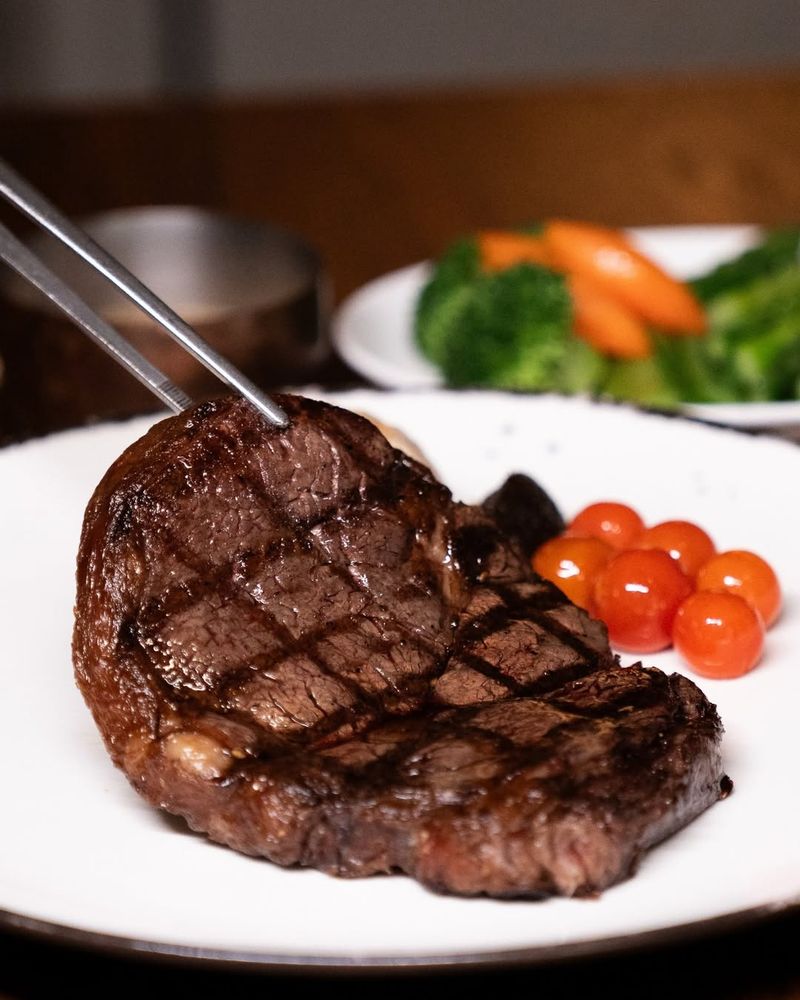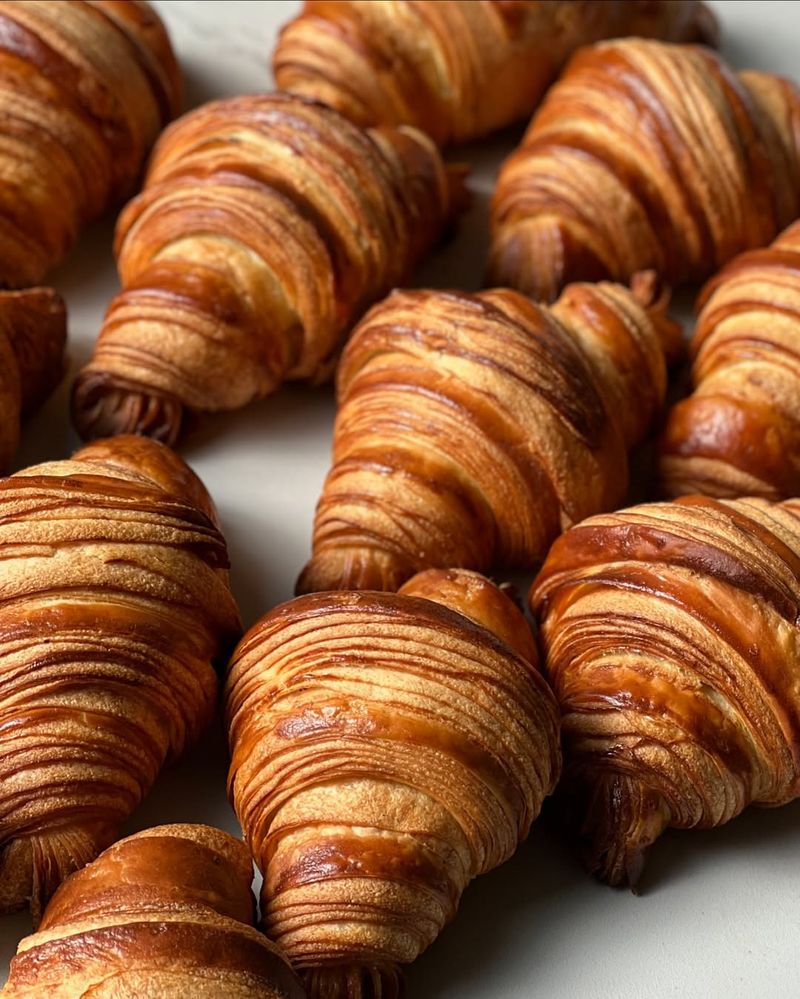Microwaves are a modern-day lifesaver, but not all foods are fans of this quick and easy method. Have you ever wondered why some dishes come out with a strange taste or off-putting texture after a zap?
Well, it’s time to dive into the fascinating world of foods that don’t play well with the microwave. It’s not just about flavor gone wrong—it’s also about your health and safety.
Get ready to uncover the unexpected, the quirky, and the downright shocking foods you should never reheat in the microwave. Let’s explore what happens behind the scenes and why some meals deserve better treatment.
1. Eggs

Eggs, when reheated in a microwave, can be a ticking time bomb. Their dense protein structure can cause heat to build up unevenly, leading to the dreaded “pop” that leaves you with a scrambled mess. Not only do you get an unexpected splatter, but the texture turns rubbery and unappealing, ruining the once-fluffy goodness.
Why take the risk when whipping up fresh eggs is a breeze? For a smooth and satisfying morning, skip the microwave and enjoy eggs in their perfectly cooked form. A little patience ensures a delicious, mess-free breakfast every time.
2. Chicken

Reheating chicken in the microwave can turn those juicy fillets into dry, flavorless chunks. The uneven heating process often causes the exterior to overcook while leaving the center cold. This method may not fully kill bacteria, posing a health risk. It’s much safer and tastier to reheat chicken in an oven or on the stovetop.
Preserve the deliciousness of your meals by steering clear of the microwave for this protein. With just a little extra effort, your chicken can stay tender, juicy, and flavorful, just like when it was first cooked.
3. Rice

Rice, when warmed up in a microwave, can harbor harmful bacteria. This isn’t just an issue of texture, but potentially of health. Microwaving sometimes fails to reach the temperatures needed to kill spores, leading to food poisoning.
For a safe and fluffy result, consider steaming or sautéing your leftover rice instead. Enjoy your grains without the gamble by opting for a safer reheating method. A little extra care ensures your rice stays both delicious and safe to eat.
4. Potato Wedges

Potato Wedges may seem like a simple reheat, but microwaving them is a recipe for disaster. Their dense, hearty structure makes them prone to uneven heating, leading to a dry, crusty exterior while the inside stays disappointingly cold.
And if they haven’t been stored properly before reheating, you might even run into the risk of bacterial growth. Reheat them in the oven, and you’ll enjoy that crispy skin and soft, steamy interior that make potatoes the true comfort food they are meant to be.
5. Fish

Fish and microwaves are a match made in culinary chaos. The rapid heating often destroys delicate flavors and textures, leaving you with a rubbery, smelly result. Besides, the aroma can linger in your microwave, affecting other foods.
For a meal that’s flavorful and pleasant, try reheating fish by steaming or in the oven. By doing so, you preserve its taste and avoid offending your senses. A little extra care ensures your fish stays flaky, tender, and just as delicious as when it was first cooked.
6. French Fries

Reheating French fries in the microwave is a recipe for disappointment. While the microwave heats them quickly, it makes fries soggy and chewy rather than crispy and golden. The moisture from the microwave creates a steam effect, causing the fries to lose their texture and become limp.
The uneven heat distribution in a microwave can leave some fries lukewarm while others stay cold. For the best results, reheating fries in an oven or air fryer helps restore their crispiness, ensuring you get that satisfying crunch with every bite.
7. Bread

Bread and microwaves simply don’t mix. Reheating bread this way often results in a tough, chewy texture that’s far from fresh. The heat zaps out moisture in seconds, leaving behind something closer to cardboard than a comforting slice.
If warm, fluffy bread is what you’re after, stick to the oven or toaster, where it can toast up golden or stay perfectly soft. Your carbs deserve better—don’t let the microwave take the joy out of every bite!
8. Pizza

Microwaving pizza might seem like a quick fix, but it’s a surefire way to ruin a perfect slice. The once-crispy crust turns into a chewy, rubbery disappointment, while the cheese melts into an oily puddle that slides right off.
Instead of that glorious balance of crispy, gooey, and savory, you’re left with a sad, limp version of what was once a masterpiece. For a proper pizza revival, reheat it in the oven or a skillet—where the crust stays crisp, the cheese gets melty in all the right ways, and every bite is just as satisfying as the first.
9. Fried Foods

Fried foods and microwaves don’t see eye to eye. The once crispy exterior turns soft and greasy, losing its initial appeal. The texture suffers, and the flavors become muddled. To enjoy the crunchy goodness you love, try reheating in an oven or air fryer.
These methods retain the texture and taste that make fried foods irresistible. A little extra time ensures every bite stays as crispy and satisfying as it was meant to be.
10. Pasta

Microwaving pasta is a fast track to disappointment, turning a once-perfect dish into a sticky, clumpy mess. The sauce separates, the noodles dry out, and every bite loses that comforting balance of flavor. This beloved classic deserves a revival, not a ruin.
Instead, bring it back to life on the stovetop with a splash of water or extra sauce, gently warming it to restore its silky texture. With this simple trick, every forkful stays saucy, satisfying, and just as delicious as when it was first made.
11. Steak

A perfectly cooked steak deserves better than a quick zap in the microwave. The intense, uneven heat saps its juiciness, leaving you with a tough, overcooked disappointment instead of a tender, flavorful bite. The once-rich flavors fade, and that mouthwatering sear turns into a dry, lackluster slab.
If you want to keep your steak at its best, reheat it in a pan or oven, allowing the heat to gently revive its succulence. With a little extra care, you can enjoy a second helping that’s just as delicious as the first.
12. Shellfish

Shellfish in a microwave is a recipe for disaster, resulting in an overpowering smell and a tough, rubbery texture. These delicate ocean treasures deserve better than a blast of uneven heat. Not only does it ruin their natural tenderness, but it also strips away their rich, briny flavor.
To preserve their best qualities, reheat them by steaming or gently warming them in a pan. This simple method keeps their taste intact, ensuring every bite is just as delicious as the first.
13. Nachos

Nachos in the microwave can quickly turn them into a soggy, unappetizing mess. The cheese loses its smooth, gooey texture and instead becomes clumpy, while the chips absorb moisture and lose their satisfying crunch.
The microwave’s uneven heating also results in some nachos being scalding hot and others barely warm, making for an inconsistent, lackluster bite. If you want to keep your nachos crispy and flavorful, an oven or toaster oven is your best bet, reviving their perfect texture and taste.
14. Pastries

Microwaving pastries can quickly ruin their delicate texture. The uneven heat often makes some areas soggy, while others become dry or tough. These delightful treats deserve a more careful touch to maintain their flaky, buttery layers.
To revive their freshness, use an oven or toaster oven, which ensures even warmth and preserves that golden, crispy crust. Enjoy every bite as if it were straight from the bakery, with the perfect balance of crispness and softness.
15. Breast Milk

Microwaving breast milk might seem like a quick fix, but it’s far from ideal. The uneven heating can create hot spots, risking burns to your baby’s delicate mouth. Plus, the microwave can break down essential nutrients and antibodies, reducing the milk’s powerful health benefits.
To keep your baby’s milk as nourishing as possible, try warming it with a bottle warmer or in a gentle water bath. This way, you preserve both the flavor and the nutrients, giving your little one the best feed possible.
16. Leafy Greens

When microwaved, leafy greens like spinach and kale can convert naturally occurring nitrates into nitrosamines, which may be harmful in large amounts.
Although nitrates themselves are usually safe and can even support heart health and blood pressure, reheating them at high temperatures can turn them into carcinogens, according to research. To avoid this, it’s best to reheat these vegetables gently or enjoy them fresh to preserve their health benefits.
17. Chili Peppers

Reheating chili peppers—whether fresh, roasted, or mixed into dishes—in the microwave can be problematic. The high heat can cause capsaicin, the compound responsible for their spiciness, to vaporize or break down, leading to uneven heating and an increase in spiciness.
As a result, your peppers may turn out soggy and lackluster, or they might become unbearably hot. For the best results, it’s wiser to gently reheat spicy dishes on the stovetop to maintain a more even temperature and preserve their texture.
18. Mushrooms

Mushrooms are delicate and can suffer from the high heat of a microwave, which affects their texture and flavor. Due to their high water content, they often release moisture too quickly, resulting in a soggy or rubbery outcome.
For the best results, reheat mushrooms slowly on the stovetop or in the oven to preserve their tender texture and rich, earthy taste. Sautéing them on low to medium heat can even give them a crispy edge, bringing out their full, natural flavor.
19. Sausages

Microwaving sausages can turn them into a letdown. Instead of juicy and flavorful, they become rubbery and lackluster, losing that savory kick. To keep your sausages tasting as amazing as when they were first cooked, reheat them in a pan or oven.
This method locks in the flavor and preserves the perfect texture, ensuring every bite is just as satisfying as the first. Skip the microwave disaster and enjoy your sausages at their best!
20. Gravy

Gravy and microwaves don’t mix well—what should be silky and smooth often turns into a lumpy mess. Uneven heating causes it to thicken unpredictably, ruining its rich consistency.
For a perfectly silky texture, warm gravy gently on the stovetop, whisking as it heats to bring back its original smoothness. This simple trick keeps your meals bathed in savory goodness, without the dreaded clumps.

